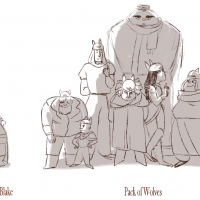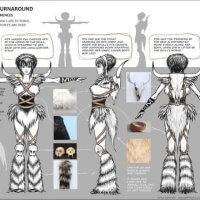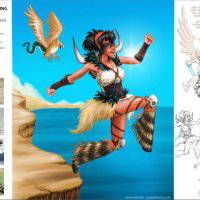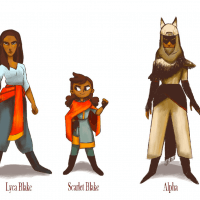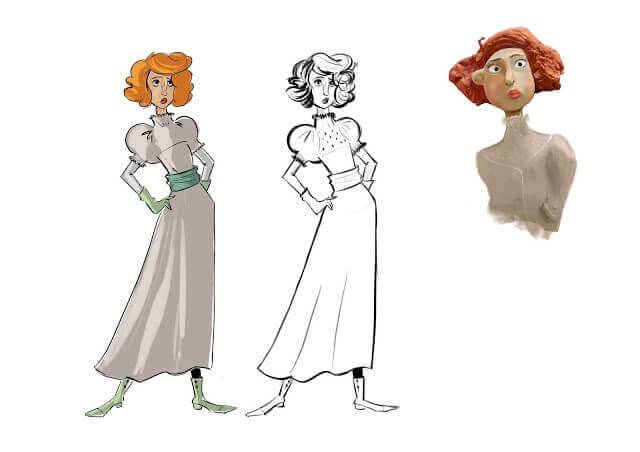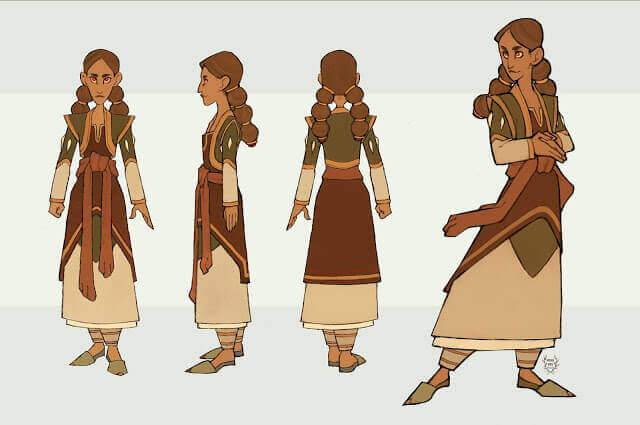Ten Rules to Create an Awesome Animation Portfolio
One of the most common questions I get asked by students applying to study animation at Escape Studios is: “What should go into my portfolio?” It’s a good question, and the simple answer is “your best work”. The longer answer is to include a broad range of traditional and digital media. Below are our top ten Rules to put together an impressive portfolio.
Rule 1 – Be inclusive
Include a bit of everything: drawings, painting, life drawing, sketches, scribbles, 3D digital artwork – whatever you have to hand. You never know what the person interviewing you is looking for, so include lots of stuff.
Rule 2 – Go digital
It’s a digital world. Ideally your traditional artwork, such as drawings, paintings or collage, should be scanned (you can use your phone if need be) and then cleaned up in Photoshop and uploaded to a website or blog. If you don’t have a website or blog, consider making one (see rule 4 below).
Rule 3 – Try doing some animation
You’d be surprised how many students apply to study animation but haven’t actually tried doing any. How do you know you will like doing it, if you haven’t tried it? As long as you have access to a computer (and all schools have them these days) you can try out animation in many different kinds of software, such as Photoshop or Adobe Animate. We recommend Blender; it’s free to download, and there are tons of tutorials at YouTube. Follow a tutorial or two and see how you get on. We don’t mind seeing bad animation – the mere fact that you have tried doing some at all will separate you from the rest of the pack.
Rule 4 – Be online
The best kind of digital portfolio is a website or blog showcasing your work – it shows you are engaging with the modern, digital world. Nowadays it is easy to create a free blog and/or website, and start uploading your work. It’s never too early to have your own online showcase, and it’s completely free to build a website at wix.com. You can also upload your work to Tumbler, which is really a simplified kind of blog.
Rule 5 – Don’t worry if you can’t draw well
Good drawing is a plus, but it’s no longer the essential skill like it was in the old days. Just as important (maybe more so) is a willingness to overcome technical challenges. It helps a lot if you don’t get too frustrated when computers go wrong – which they do all the time. Software malfunction should be a challenge to be overcome – not a reason to stop work. Why not download a free copy of Autodesk Maya? It’s the main software we use to teach animation, and it’s free for students.
Rule 6 – Be creative
Animation is not just about mastering the software, it’s about having ideas, and giving a performance. So a sketchbook or a blog full of ideas is a definite plus.
Rule 7 – Be organised
Don’t come to an interview with a jumble of different files in a random folder, which you then can’t find. We don’t want to wade through your holiday snaps while you find your latest showreel.
Rule 8 – Avoid specialist files
We don’t want to receive specialist program files like Maya files or 3D Studio Max files, or Adobe Animate, or AfterEffects files. Specialist files like this take too long to load up and the person doing the interview may not have the right software on their laptop.
Rule 9 – Do a tech check before the interview
Just like if you were applying for a job, make sure you present your work in a format which is easily opened. Do a quick tech check – do the files actually work? And can they be opened in standard software like VLC or Adobe Acrobat?
Rule 10 – Don’t delay
You don’t need to have a polished portfolio ready in time for submission of your UCAS application. Your portfolio only needs to be ready when you come in for interview (or, at Escape Studios, to one of our Applicant Days). So, apply early, and worry about your portfolio later.
Alex Williams, has worked on films including The Lion King, The Iron Giant and Who Framed Roger Rabbit? He’s currently the Head of Animation at Escape Studios, a leading VFX, Animation, Games and Motion Graphics academy, based in central London.




